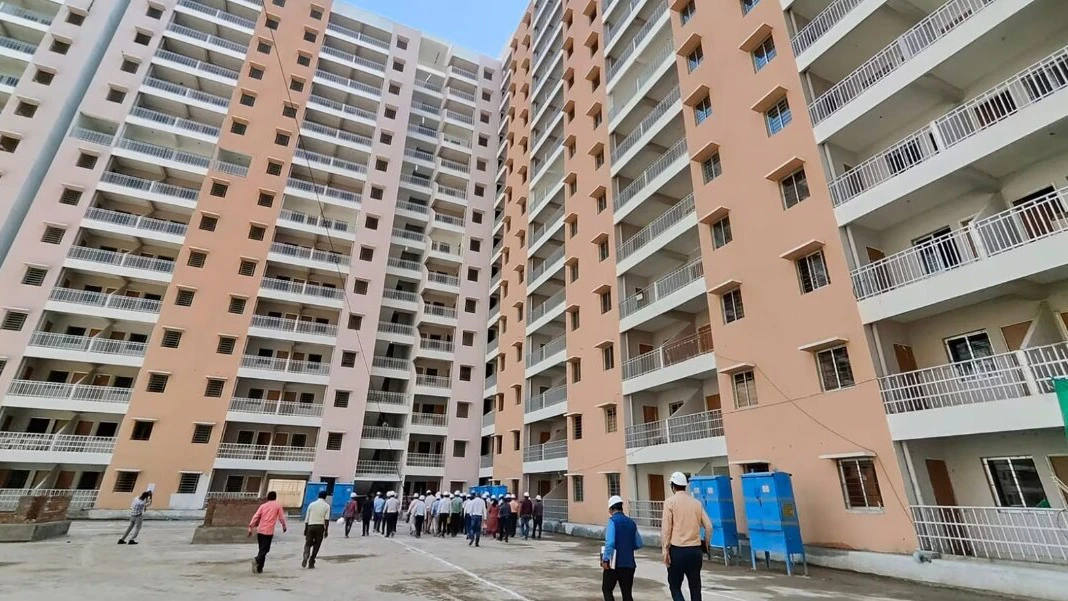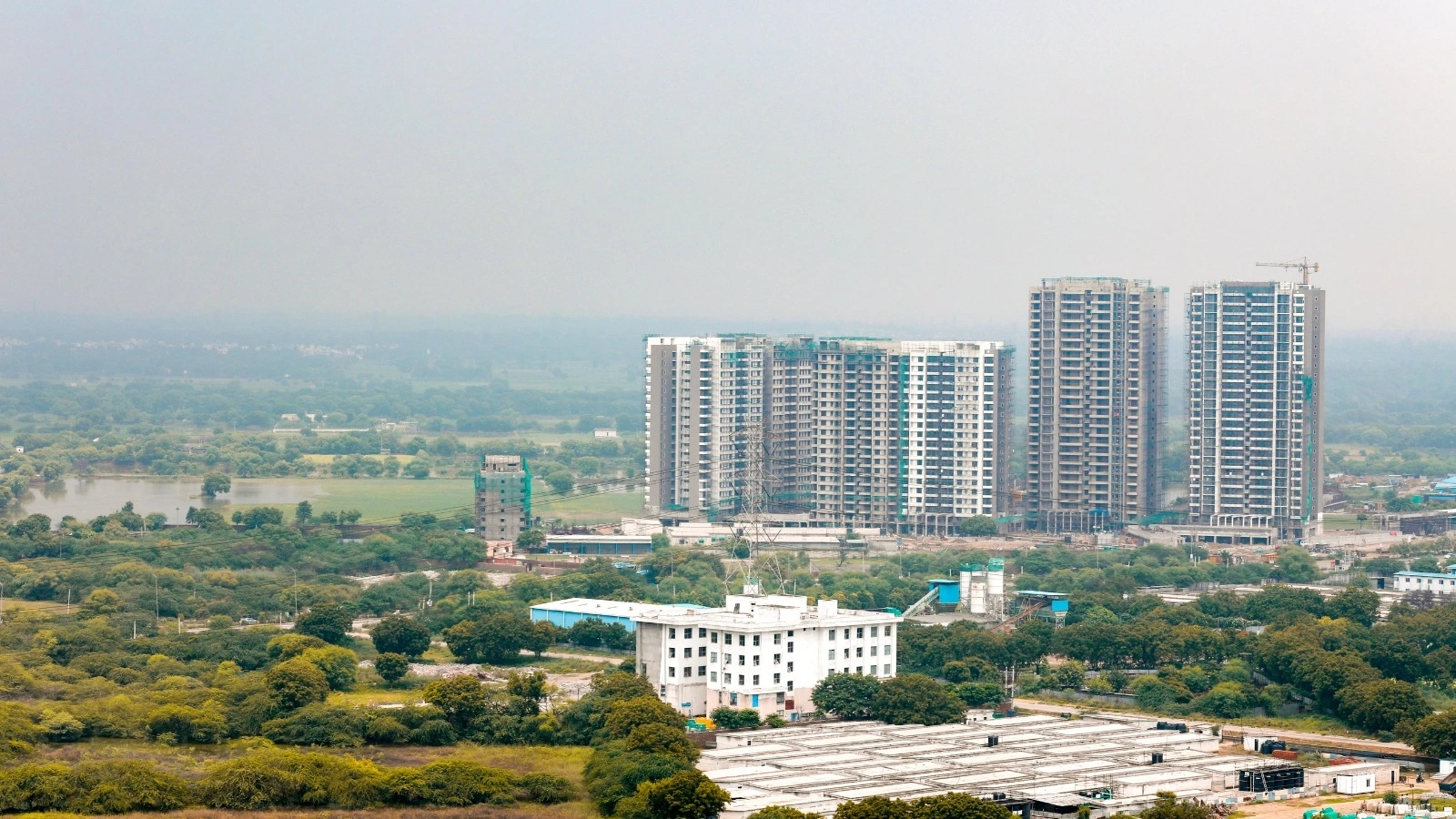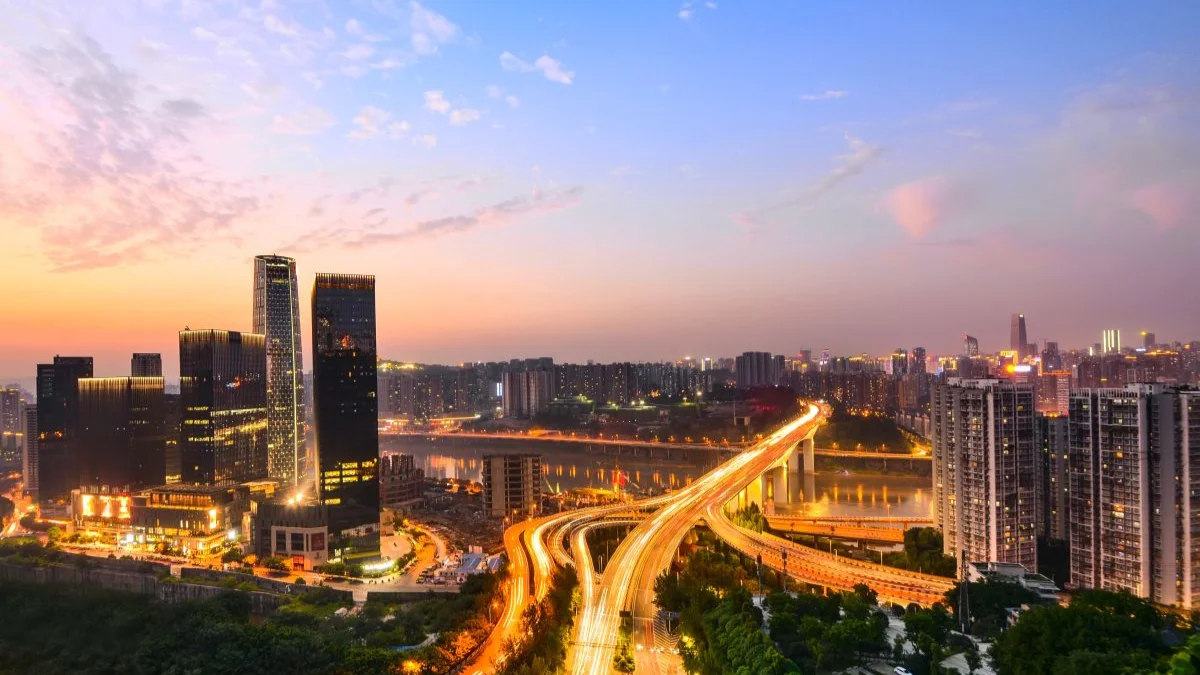Table of Content
- Overall Leasing Performance: Year-on-Year and Quarter-on-Quarter Trends
- City-Wise Retail Leasing Insights
- Malls vs High Streets: Leasing Pattern and Market Share
- Rental Trends and Occupier Profile
- Sectoral Breakdown: Who’s Driving Retail Leasing Growth
- Expert Insights and Market Commentary
- Market Outlook for Q4 2025 and Beyond
- Conclusion
India’s retail real estate market recorded a strong performance in the third quarter of 2025, driven by steady consumer demand and growing expansion by domestic brands. According to Cushman & Wakefield’s Q3 Retail Market Beat Report, India’s retail leasing in Q3 2025 surged 45% year-on-year to 2.41 million sq ft across the top eight cities.
Mumbai emerged as the top performer, capturing a 24.5% share of total activity, followed by Hyderabad and Delhi NCR with 21% each. The report highlights a steady rise in both mall and high street leasing, underlining the sector’s resilience and momentum despite limited new supply.
Overall Leasing Performance: Year-on-Year and Quarter-on-Quarter Trends
The total gross leasing volume (GLV) of 2.41 million sq ft during India’s retail leasing in Q3 2025 represents a 45% increase compared to the 1.66 million sq ft recorded in the same quarter last year. On a quarter-on-quarter basis, leasing grew 7.6%, reflecting continued occupier confidence and retail sector vitality.
Year-to-date (YTD) leasing volumes stood at 7.02 million sq ft, marking a 25.2% YoY rise, setting the sector on course to surpass the 2024 full-year GLV of 7.88 million sq ft. This momentum is supported by renewed consumer spending, stronger brand expansions, and the ongoing revival of shopping districts across key metros.
Also Read: India’s Top 8 Housing Markets Report 87,603 Q3 Sales; NCR Prices Surge 19%
City-Wise Retail Leasing Insights
Mumbai: The Top Performer
Mumbai led India’s retail leasing in Q3 2025 with a 24.5% share, equivalent to 0.6 million sq ft. The city’s retail leasing activity grew by 13% sequentially and nearly tripled YoY.
The dominance of malls continued, accounting for 84% of the total leasing volume (0.49 million sq ft), while main streets contributed 16%. This shift underscores the growing preference for organized retail spaces that offer higher visibility, professional management, and a controlled shopping environment.
Delhi NCR and Hyderabad: Strong Contenders
Delhi NCR and Hyderabad followed closely, each capturing a 21% share (0.5 million sq ft) of the total retail leasing volume. In Delhi NCR, retail leasing grew by 70% quarter-on-quarter and an impressive 88% year-on-year.
High street retail remained strong in the region, contributing nearly two-thirds of total transactions, while malls accounted for the remaining 38%. Hyderabad’s retail leasing performance remained balanced, with consistent demand across both malls and main streets.
Bengaluru and Other Cities
Bengaluru registered around 0.18 million sq ft of retail leasing during the quarter. Malls dominated the market with an 89% share, recording a 59% quarterly growth. In contrast, main street activity softened slightly, representing just 11% of the total leasing.
Meanwhile, other metros such as Pune, Chennai, and Kolkata maintained stable leasing trends, reinforcing the nationwide momentum in organized retail growth.
Malls vs High Streets: Leasing Pattern and Market Share
In India’s retail leasing in Q3 2025, malls absorbed 1.16 million sq ft, representing 48% of total leasing activity, while high streets accounted for 1.25 million sq ft, or 52%. Malls witnessed 15% quarterly growth, whereas high streets recorded a modest 1.5% uptick.
A notable trend this quarter was the absence of new Grade A mall completions, keeping year-to-date additions at 1.3 million sq ft. This limited supply led to a decline in vacancy levels down by 91 basis points to 7.25%. In Grade A+ malls, vacancy dipped further to 2.27%, indicating robust demand for prime spaces.
The scarcity of new inventory and strong leasing momentum suggest an urgent need for fresh mall supply to sustain market growth.
Rental Trends and Occupier Profile
Rental values in India’s retail leasing in Q3 2025 remained largely stable, with mall rents holding firm and main street rents increasing by 1% quarter-on-quarter.
Domestic retailers dominated activity, accounting for 82.5% of total leasing — an indication of the sector’s strong local foundation. In contrast, international brands contributed 17.5%, primarily focusing on malls for their visibility, amenities, and managed infrastructure.
Segments such as fashion, food & beverage (F&B), and entertainment continued to be major leasing drivers, reflecting a maturing retail landscape centered around experience-based consumer engagement.
Sectoral Breakdown: Who’s Driving Retail Leasing Growth
Three key categories fueled the surge in India’s retail leasing in Q3 2025:
- Fashion (21.4%) – Domestic apparel and lifestyle brands expanded aggressively in both malls and high streets.
- Food & Beverage (19.3%) – Restaurants, cafés, and QSR chains increased their footprints to tap rising dining-out demand.
- Entertainment (15.8%) – Multiplexes and family entertainment centers saw fresh leasing as mall footfalls strengthened
Together, these sectors accounted for over half of total leasing activity, highlighting India’s evolving consumption story and the shift toward experiential retail environments.
Expert Insights and Market Commentary
According to Gautam Saraf, Executive Managing Director, Mumbai New Business, Cushman & Wakefield:
“India’s retail sector continues its growth trajectory, driven by evolving consumer preferences and rising disposable incomes. The expansion of fashion, F&B, and entertainment brands reflects a maturing market where experience and engagement drive spending.”
Saraf also noted that domestic brands are leading expansion across both metros and Tier 2 cities, while international retailers are selectively re-entering the market through premium malls.
He added, “Although current supply constraints present short-term challenges, they underscore the sector’s underlying strength. The upcoming supply pipeline of around 3 million sq ft in Q4 2025 and 15.5 million sq ft by 2027 will help balance demand.”
Also Read: Navi Mumbai Airport Set for Inauguration; CIDCO Accelerates 667-Acre Aerocity Plan
Market Outlook for Q4 2025 and Beyond
The outlook for India’s retail real estate remains positive. With 3 million sq ft of fresh supply expected in Q4 2025, the sector is poised to maintain its growth trajectory into 2026.
New Grade A malls under construction in cities like Mumbai, Hyderabad, and Gurugram are expected to ease current supply pressures. The future pipeline of 15.5 million sq ft (Q4 2025–2027) signals continued developer confidence and growing investor participation.
Given the strong leasing momentum, healthy occupancy, and expanding domestic retail footprint, India’s retail leasing in Q3 2025 sets a strong foundation for sustained growth over the next few years.
Conclusion
The data from Cushman & Wakefield highlights a clear picture of India’s retail leasing in Q3 2025 jumped 45% year-on-year, underscoring the strength of consumer demand and retailer expansion strategies.
Mumbai led the way with a 24.5% share, followed closely by Delhi NCR and Hyderabad. Malls and high streets both contributed significantly to the quarter’s success, supported by stable rents and record-low vacancy rates.
As India’s urban centers continue to evolve and consumers seek more experiential retail environments, the outlook for the retail real estate market remains robust. The coming quarters will likely see renewed leasing momentum, new mall launches, and deeper penetration of organized retail a sign that India’s retail growth story is far from over.

_1759993530.webp)






_1766133697.webp)
Ans 1. Retail leasing surged 45% year-on-year to 2.41 million sq ft across the top eight cities, reflecting strong consumer demand and brand expansion.
Ans 2. Mumbai led the market with a 24.5% share (0.6 million sq ft), followed by Hyderabad and Delhi NCR, each contributing 21%.
Ans 3. Expansion by domestic brands, rising consumer spending, and demand from fashion, F&B, and entertainment sectors drove the surge in leasing activity.
Ans 4. Malls accounted for 48% of total leasing (1.16 million sq ft), while high streets captured 52% (1.25 million sq ft). Mall leasing grew 15% quarter-on-quarter, supported by limited new supply and high occupancy.
Ans 5. Rental values remained largely stable, with mall rents holding firm and high street rents rising slightly by 1% quarter-on-quarter.
Ans 6. Domestic retailers accounted for 82.5% of leasing activity, while international brands contributed 17.5%, primarily focusing on Grade A malls.
Ans 7. The fashion (21.4%), food & beverage (19.3%), and entertainment (15.8%) segments together drove over half of total leasing activity.
Ans 8. The main challenge is limited new mall supply, which has reduced vacancy to 7.25% overall and 2.27% in Grade A+ malls, creating pressure on available space.
Ans 9. Around 3 million sq ft of new supply is expected in Q4 2025, with 15.5 million sq ft projected through 2027, indicating strong developer confidence.
Ans 10. The outlook remains robust, supported by sustained leasing momentum, healthy occupancy, and the expansion of domestic and international brands across metros and Tier 2 cities.